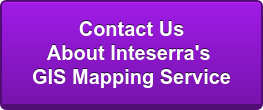
Today: US House FCC Transparency Act, FCC Wireless Emergency Alert System Test, FCC Alaska CAF Phase II Challenge Process
US House FCC Transparency Act
Congressman Adam Kinzinger (IL 16) introduced H.R. 6422, the Federal Communications Commission (FCC) Transparency Act, which would require the FCC to publish to their website the documents to be considered by the Commission at least 21 days ahead of a vote. The ACT allows the Chairman to make emergency exceptions to the 21 day rule if the publications of such a document is deemed confidential or classified, or would impose an invasion of privacy, among other exemptions of sensitive data, consistent with longstanding law and policy.
Congressman Kinzinger released a statement saying, in part: "As a member of the House Energy and Commerce Committee, I'm proud to serve on the Subcommittee on Communications and Technology as we work on strong, bipartisan bills that impact the lives of all Americans. From rural broadband to mobile communications, television broadcast to cyberspace and national security, members of this Committee work hand-in-hand with the FCC to facilitate innovation in our economy and protect consumers. We must ensure that the American public has access to rules the FCC is proposing so they can provide input. This will help the FCC be more responsive and productive while also keeping our government more open and transparent to those we serve." The Congressman introduced similar legislation in 2015.
In response to the bill's introduction, FCC Commissioner O'Rielly issued a statement saying: "I applaud Representative Kinzinger n reintroducing the FCC Transparency Act. This legislation codifies the current and critical Commission practice of publicly posting items three weeks in advance of their consideration at monthly Commission meetings. As a result of this practice, unnecessary discussions of non-existent issues have been eliminated, conversations are more productive, Commissioners are still speaking their minds and negotiating internally on items, and work product has greatly improved. I have also seen comments from all Commissioner offices - Republican and Democrats - in favor of the practice. Despite the broad support for this program, as well as Chairman Pai's effort to initiate this reform for added agency transparency, I believe codifying this practice Is important to ensuring its longevity."
FCC Wireless Emergency Alert System Test
The FCC’s Public Safety and Homeland Security Bureau (Bureau) announced that a nationwide combined test of the Wireless Emergency Alert (WEA) and Emergency Alert System (EAS) will be held on September 20, 2018, with a back-up date of October 3, 2018. At 2:18 p.m. Eastern Daylight Time (EDT), the Federal Emergency Management Agency (FEMA) will send a WEA test message to WEA-capable wireless devices throughout the entire United States and territories. All wireless providers that have elected to participate in WEA are required to participate in this nationwide test. The WEA test message will state:
“THIS IS A TEST of the National Wireless Emergency Alert System. No action is needed.”
Immediately following the WEA nationwide end-to-end test, at 2:20 p.m. EDT, FEMA will conduct a live test of the EAS. All EAS Participants are required to participate in this nationwide test. The following EAS message will be disseminated via the Integrated Public Alert and Warning System (IPAWS):
“THIS IS A TEST of the National Emergency Alert System. This system was developed by broadcast and cable operators in voluntary cooperation with the Federal Emergency Management Agency, the Federal Communications Commission, and local authorities to keep you informed in the event of an emergency. If this had been an actual emergency an official message would have followed the tone alert you heard at the start of this message. A similar wireless emergency alert test message has been sent to all cell phones in the nation. Some cell phones will receive the message. Others will not. No action is required.”
The EAS alert will be transmitted in English and Spanish and include both audio and the text of the test message, which can be used to populate an accessible video crawl.
EAS participants are remined of their obligation to register with the EAS Test Reporting System and file day of test information and post-test information.
FCC Alaska CAF Phase II Challenge Process
The FCC’s Wireline Competition Bureau (Bureau) announced it was continuing the challenge process for Alaska Communications Systems (ACS) to identify areas eligible for its Connect America Fund (CAF) Phase II frozen support. ACS has filed a second list of 4,691 additional locations in partially-served census blocks to which it proposes to deploy using Phase II support. That second list is available here.
Under the terms of the ACS CAF II Order, providers that qualify as an unsubsidized competitor now have until September 4, 2018 to notify ACS and the Bureau that they currently offer voice and broadband service meeting the requisite requirements to the locations identified by ACS. Challenges may be filed using the Commission’s Electronic Comment Filing System (ECFS), or by filing paper copies.
____________________________
The Regulatory Mix, Inteserra’s daily blog of telecom related regulatory activities, is a snapshot of PUC, FCC, legislative, and occasionally court issues that our regulatory monitoring team uncovers each day. Depending on their significance, some items may be the subject of an Inteserra Briefing.





